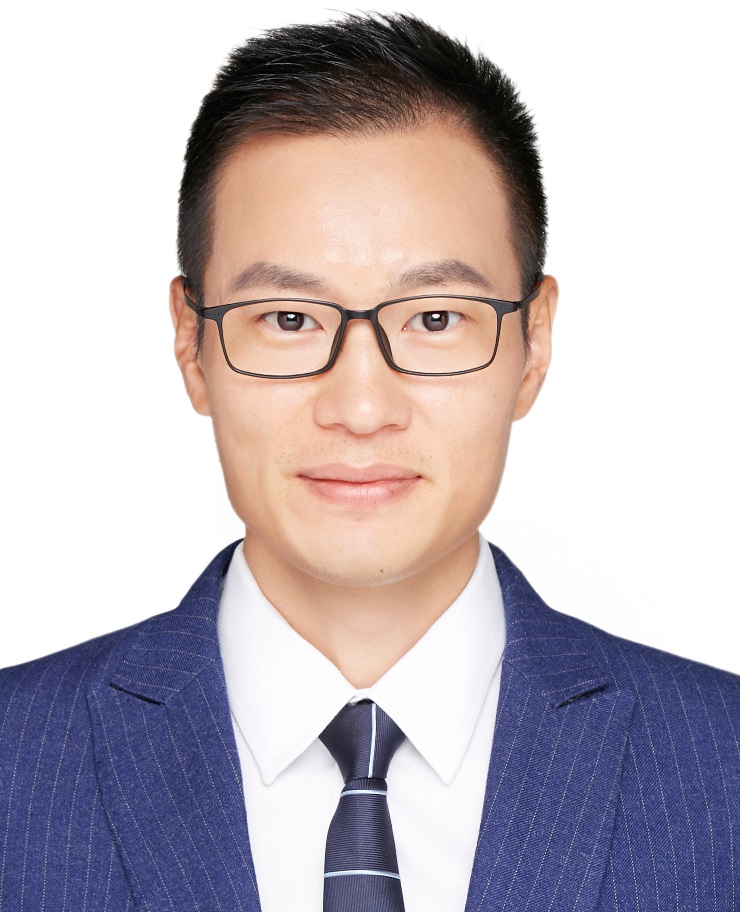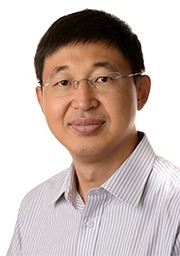
Keynote Speakers

Prof. Guan Gui
Nanjing University of Posts and Telecommunications, China
(IEEE/IET/AAIA Fellow)
Guan Gui (Fellow, IEEE) received the Ph.D. degree from the University of Electronic Science and Technology of China, Chengdu, China, in 2012. From 2009 to 2014, he joined Tohoku University as a Research Assistant and a Post-Doctoral Research Fellow. From 2014 to 2015, he was an Assistant Professor with Akita Prefectural University, Akita, Japan. Since 2015, he has been a Professor with the Nanjing University of Posts and Telecommunications, Nanjing, China. He has published more than 200 IEEE journals/conference papers. His recent research interests include intelligence sensing and recognition, intelligent signal processing, and physical layer security. Dr. Gui contributions to intelligent signal analysis and wireless resource optimization have earned him the title of fellow of the IEEE, IET, and AAIA. He was a recipient of several Best Paper Awards, such as ICC 2017, ICC 2014, and VTC 2014-Spring. He received the IEEE Communications Society Heinrich Hertz Award in 2021, top 2% scientists of the world by Stanford University from 2021 to 2023, the Clarivate Analytics Highly Cited Researcher in Cross-Field from 2021 to 2023, the Highly Cited Chinese Researchers by Elsevier from 2020 to 2023, a member and Global Activities Contributions Award in 2018, the Top Editor Award of IEEE Transactions on Vehicular Technology in 2019, the Outstanding Journal Service Award of KSII Transactions on Internet and Information System in 2020, the Exemplary Reviewer Award of IEEE Communications Letters in 2017, the 2012 Japan Society for Promotion of Science (JSPS) Postdoctoral Fellowships for Foreign Researchers, and the 2018 Japan Society for Promotion of Science (JSPS) International Fellowships for Overseas Researchers. He was also selected as the Jiangsu Specially-Appointed Professor in 2016, the Jiangsu High-Level Innovation and Entrepreneurial Talent in 2016, and the Jiangsu Six Top Talent in 2018. Since 2022, he has been a Distinguished Lecturer of the IEEE Vehicular Technology Society. He is serving or served on the editorial boards of several journals, including IEEE Transactions on Vehicular Technology, IEICE Transactions on Communications, Physical Communication, Wireless Networks, IEEE Access, Journal of Circuits, Systems and Computers, Security and Communication Networks, IEICE Communications Express, and KSII Transactions on Internet and Information Systems, and Journal on Communications. In addition, he served as the IEEE VTS Ad Hoc Committee Member in AI Wireless; the Executive Chair of IEEE ICCT 2023; the Workshop Chair of LANTINCOM2023; the TPC Chair of PRAI 2022, ICGIP 2022, PHM 2021, and WiMob 2020; the Executive Chair of VTC 2021-Fall; the Vice Chair of WCNC 2021; the Symposium Chair of WCSP 2021; the General Co-Chair of Mobimedia 2020; the Track Chairs of EuCNC 2021 and 2022, and VTC 2020 Spring; the Award Chair of PIMRC 2019; and a TPC Member of many IEEE international conferences, such as GLOBECOM, ICC, WCNC, PIRMC, VTC, and SPAWC.
Speech Title: Intelligent Signal Sensing and Recognition Towards Physical Security
Abstract: The dawn of 6G wireless communication introduces a transformative era characterized by pervasive sensing and advanced intelligent identification, essential for ensuring physical security. This keynote speech highlights the integration of Artificial Intelligence (AI) and Deep Learning (DL) as pivotal in addressing the dynamic and complex challenges of 6G networks. We emphasize the role of AI in revolutionizing signal sensing and recognition. Our discussion centers on the application of these neural networks in enhancing signal detection, classification, and Specific Emitter Identification (SEI). By leveraging gradient-based optimization techniques, we demonstrate how ANNs can improve model and algorithm parameterization, leading to a data-driven approach that surpasses traditional rule-based systems. This advancement is crucial in the physical layer of wireless communications, where intelligent signal recognition plays a key role in maintaining security and efficiency. We also explore the challenges faced by conventional model-based methods in the evolving landscape of 6G communication systems, which are marked by complex interference and uncertain channel conditions. DL emerges as a solution, offering innovative strategies for redesigning baseband module functionalities, including coding/decoding and detection processes. In conclusion, this keynote underscores the significance of integrating intelligent signal sensing and recognition with DL technologies in 6G networks. This approach not only enhances physical security but also paves the way for a more robust, efficient, and intelligent wireless communication ecosystem, capable of meeting the security demands of the future.

Prof. Di Xiao
College of Computer, Chongqing University, China
Di Xiao is now a professor and doctoral supervisor in the College of Computer Science, Chongqing University, Chongqing, China. He is a senior member of IEEE/CACR/CSIG/CCF. He was the winner of the New Century Talents Program of the Ministry of Education of China, the winner of Chongqing Distinguished Young Scholars and the innovation leader of Chongqing Talent Plan. He has published more than 150 SCI indexed papers as the first or corresponding author in the field of information security such as multimedia security, privacy protection and artificial intelligence security, and has won second prize of Chongqing Municipality Natural Science Award twice. He has been selected as “2014-2022 Elsevier Most Cited Chinese Researchers” for nine consecutive times and one of the "World's Top 2% Scientists".
Speech Title: Research on Compressed Sensing Solutions for Encrypted Image Compression
Abstract: In order to transmit large amounts of image data securely and efficiently, the usual method is to compress the data first to reduce the amount of data, and then encrypt the data that has been compressed. However, in some special application scenarios, it is often necessary to encrypt data first, and then further compress encrypted data. Therefore, it is necessary to solve the problem of encrypted image compression without reducing the security. This report will make use of the characteristics of compressed sensing, a breakthrough technology in the field of signal processing, and systematically introduce how to carry out in-depth research on the problem of information compression in encrypted images, and realize the compressed sensing solutions for encrypting digital images first and then compressing them. This related research has both theoretic significance and practical value. It is promising to obtain some achievements with both innovation and practicality, and provide novel solutions to ensure both the image privacy preserving and utility.

Prof. Yonghui Li
The University of Sydney, Australia(IEEE Fellow)
Yonghui Li is now a Professor and Director of Wireless Engineering Laboratory in School of Electrical and Information Engineering, University of Sydney. He is the recipient of the Australian Research Council (ARC)Queen Elizabeth II Fellowship in 2008 and ARC Future Fellowship in 2012. He is an IEEE Fellow. His current research interests are in the area of wireless communications. Professor Li was an editor for IEEE transactions on communications, IEEE transactions on vehicular technology and guest editors for several special issues of IEEE journals, such as IEEE JSAC, IEEE IoT Journals, IEEE Communications Magazine. He received the best paper awards from several conferences. He has published one book, more than 300 papers in premier IEEE journals and more than 200 papers in premier IEEE conferences. His publications have been cited more than 20000 times.
Speech Title: Beyond 5G towards a Super-connected World
Abstract: Connected smart objects, platforms and environments have been identified as the next big technology development, enabling significant society changes and economic growth. The entire physical world will be connected to the Internet, referred to as Internet of Things (IoT). The intelligent IoT network for automatic interaction and processing between objects and environments will become an inherent part of areas such as electricity, transportation, industrial control, utilities management, healthcare, water resources management and mining. Wireless networks are one of the key enabling technologies of the IoT. They are likely to be universally used for last mile connectivity due to their flexibility, scalability and cost effectiveness. The attributes and traffic models of IoT networks are essentially different from those of conventional communication systems, which are designed to transmit voice, data and multimedia. IoT access networks face many unique challenges that cannot be addressed by existing network protocols; these include support for a truly massive number of devices, the transmission of huge volumes of data burst in large-scale networks over limited bandwidth, and the ability to accommodate diverse traffic patterns and quality of service (QoS) requirements. Some IoT applications have much stringent latency and reliability requirements which cannot be accommodated by existing wireless networks. Addressing these challenges requires the development of new wireless access technologies, underlying network protocols, signal processing techniques and security protocols. In this talk, I will present the IoT network development, architecture, key challenges, requirements, potential solutions and recent research progress in this area, particularly in 5G and beyond 5G.

Prof. Xiaofeng Ding
Huazhong University of Science and Technology
I am currently a Professor and Pd.D Supervisor in the School of Computer Science and Technology at Huazhong University of Science and Technology (HUST). I received my Ph.D degree in Computer Science from HUST in 2009. I also worked as Research Fellow at the National University of Singapore and the University of South Australia during 2010-2013. My research interests mainly include data privacy and query processing, data encryption, graph databases and deep learning. Most of my works are published in reputable jounrals or conferences like IEEE Transactions on Knowledge and Data Engineering, IEEE Transactions on Dependable and Secure Computing, IEEE Transactions on Information Forensics and Security, International Conference on Very Large Data Bases (VLDB), IEEE International Conference on Data Engineering (ICDE), ACM Conference on Information and Knowledge Management (CIKM) and etc.
Speech Title: Privacy Preserving Problems in Deep Learning
Abstract: Deep learning is increasingly popular, partly due to its widespread application potential, such as in civilian, government and military domains. Given the exacting computational requirements, cloud computing has been utilized to host user data and model. However, such an approach has potential privacy implications. Therefore, we introduce a method to protect user’s privacy in the inference phase of deep learning workflow. Specifically, we use an intermediate layer to separate the entire neural network into two parts, which are respectively deployed on the user device and the cloud server.